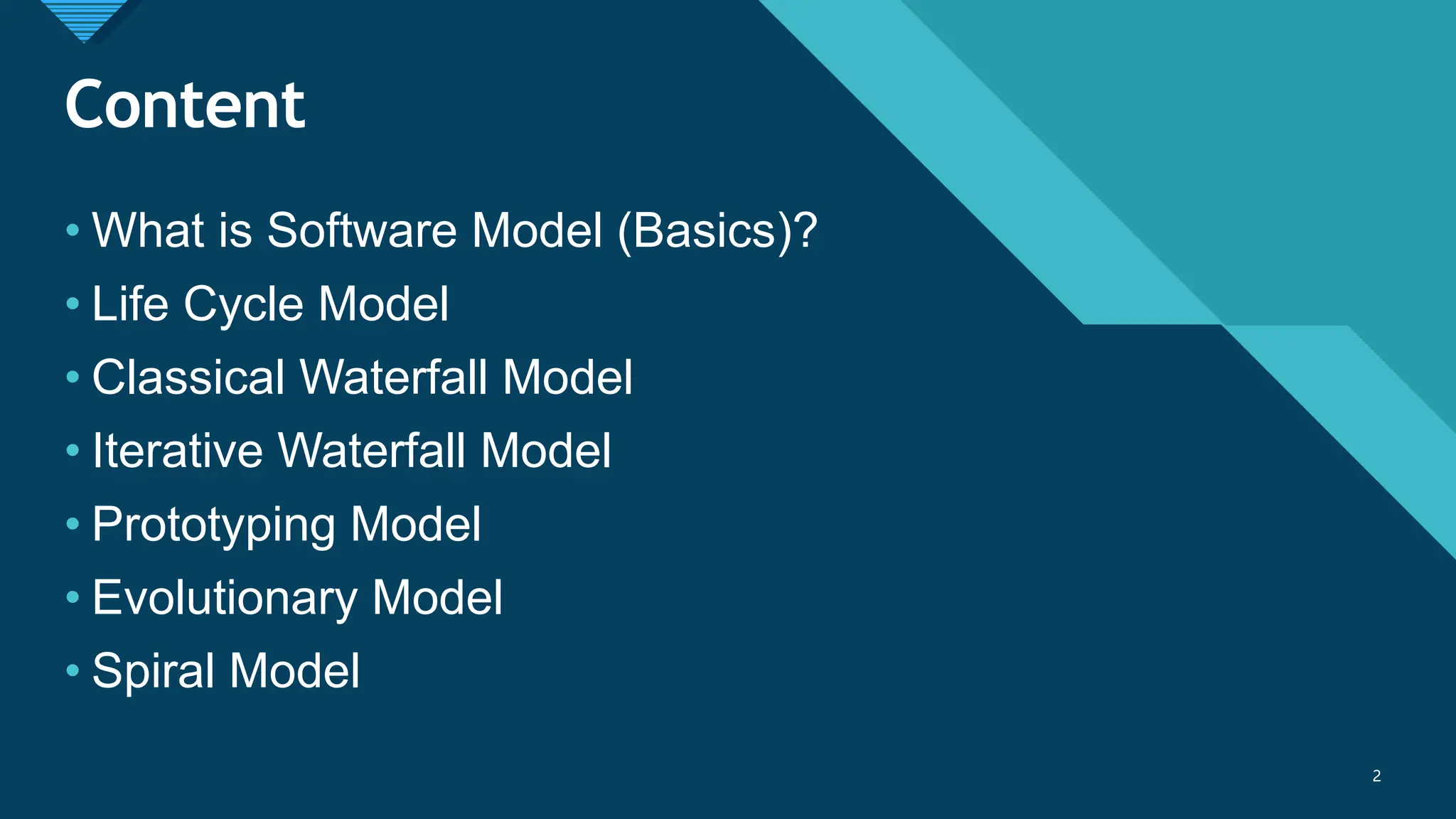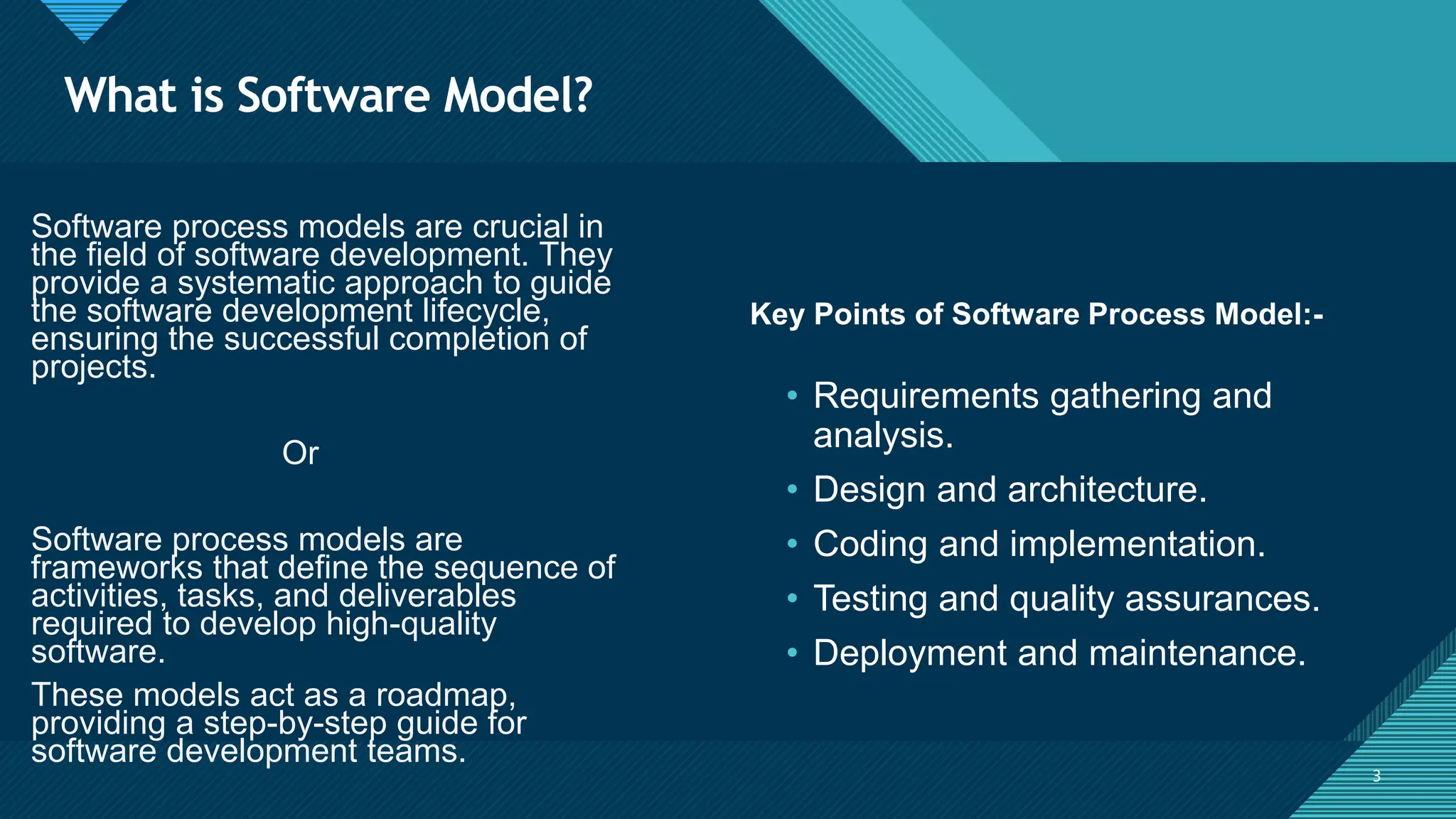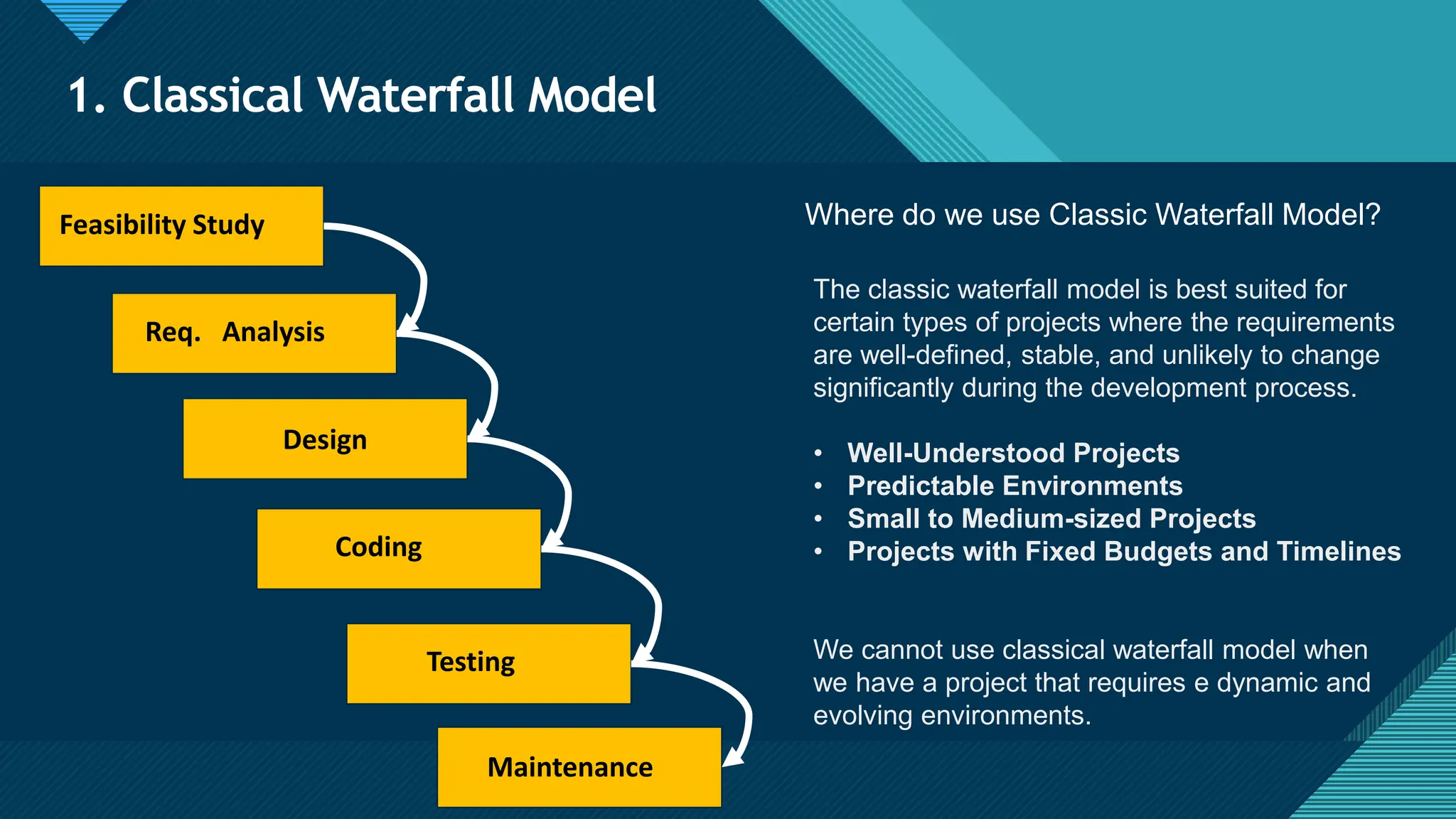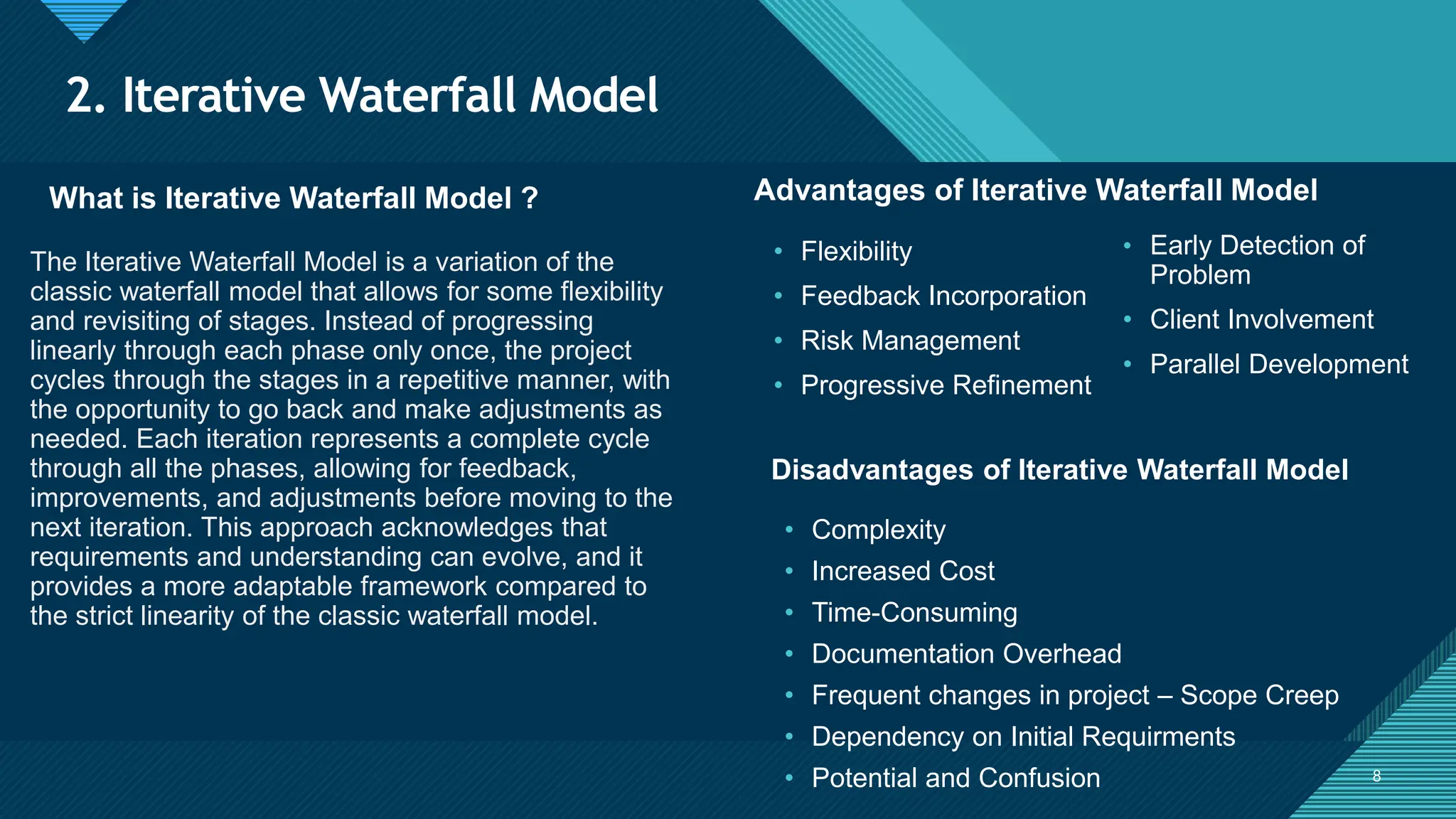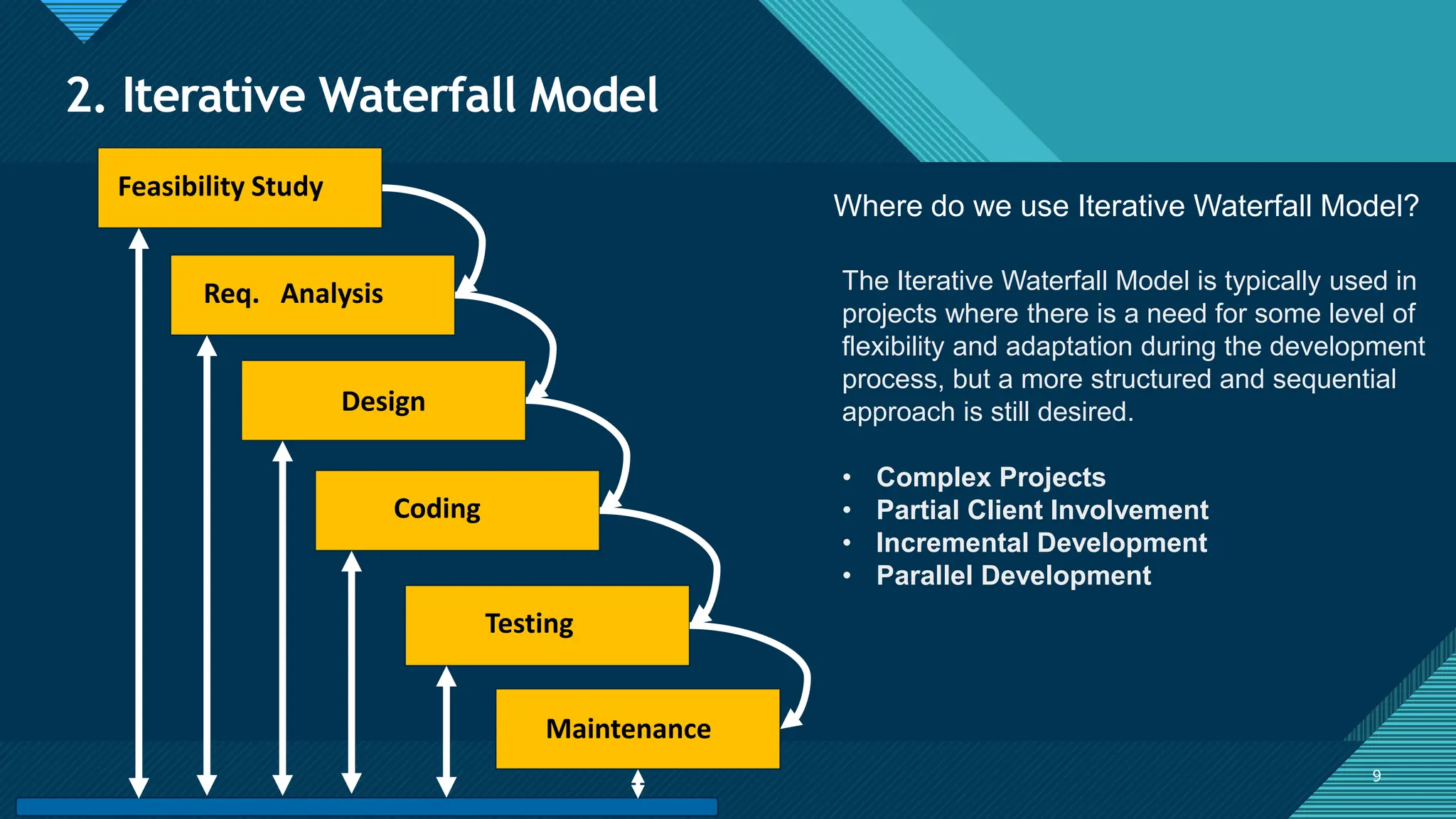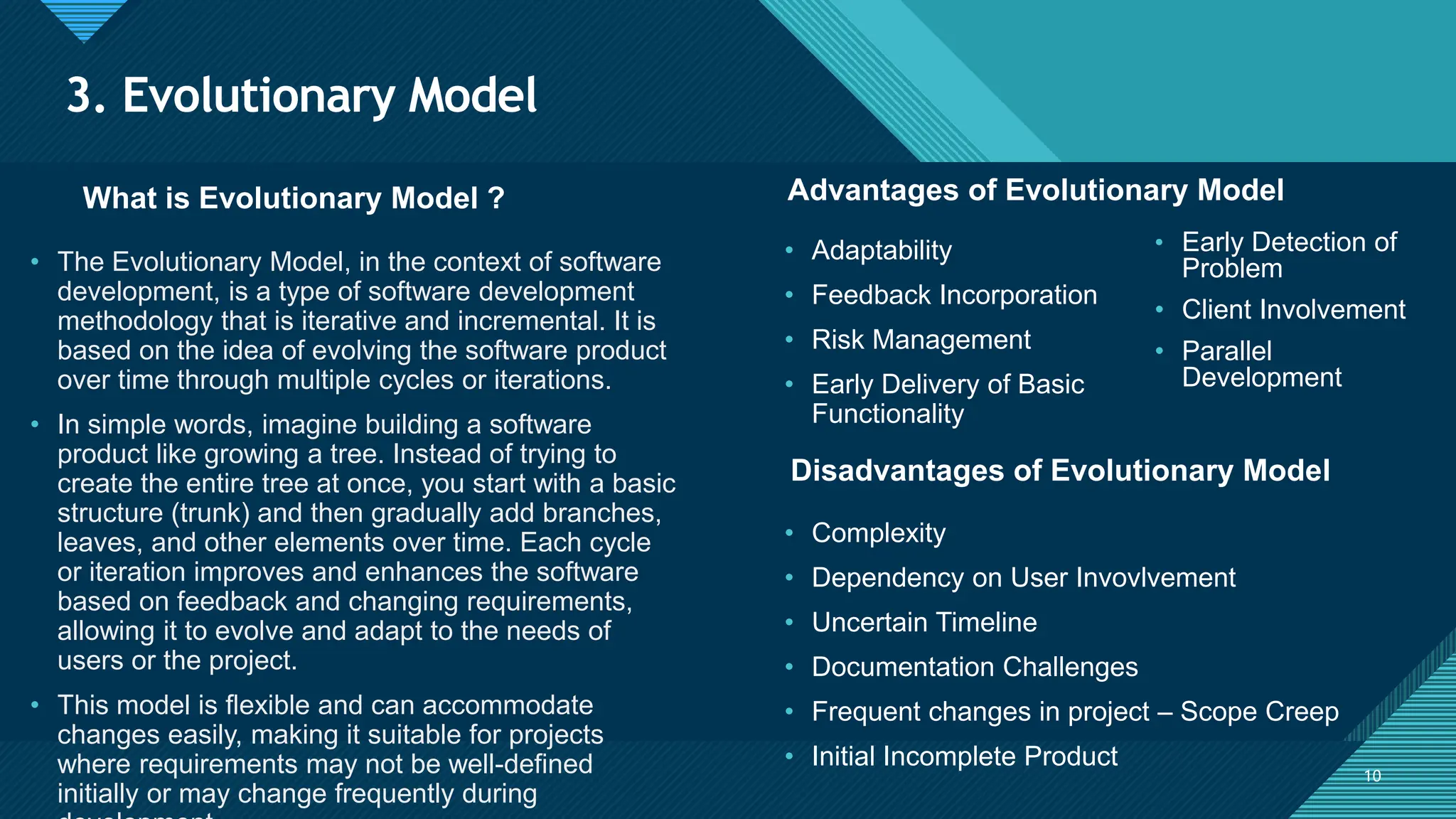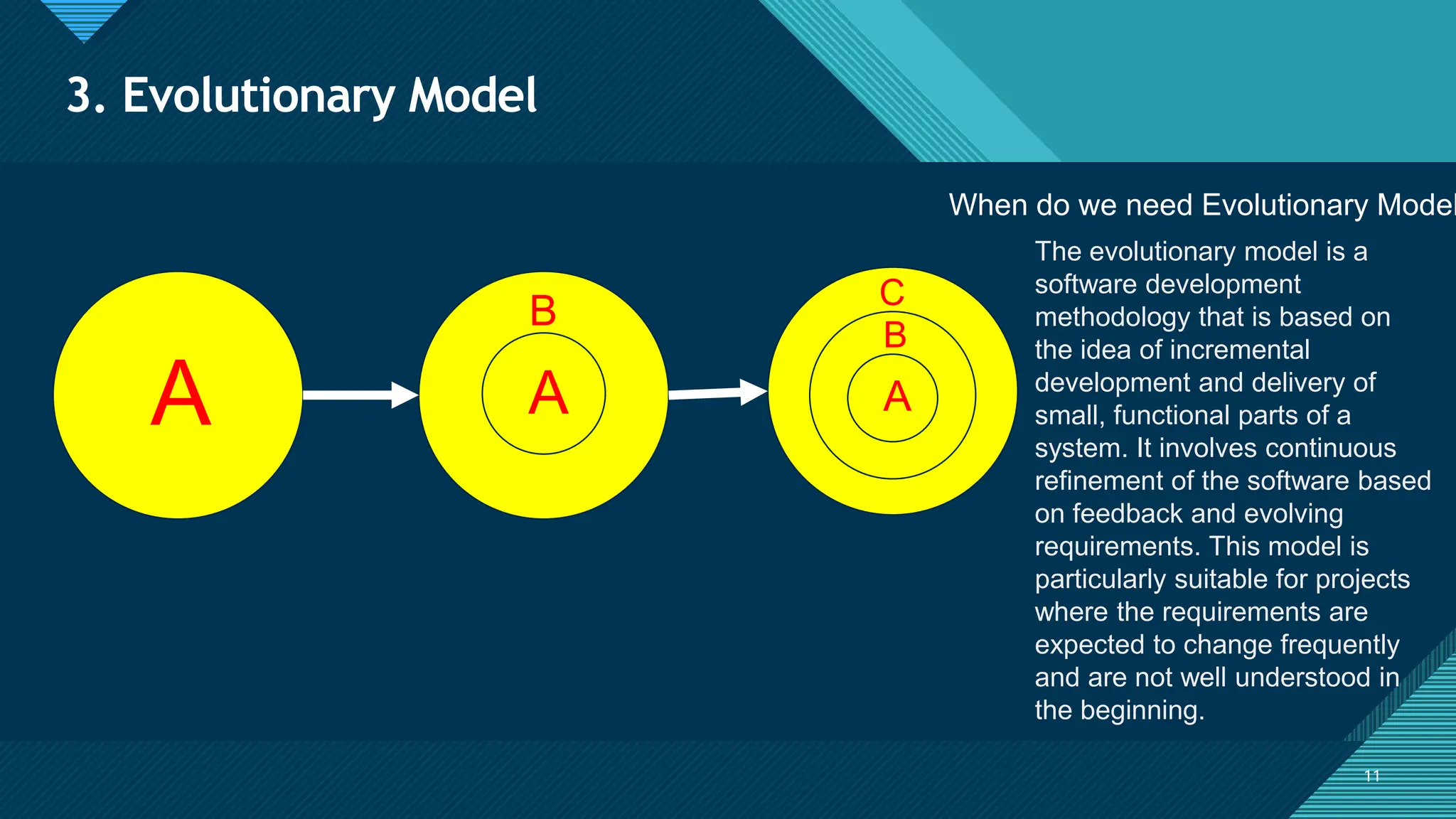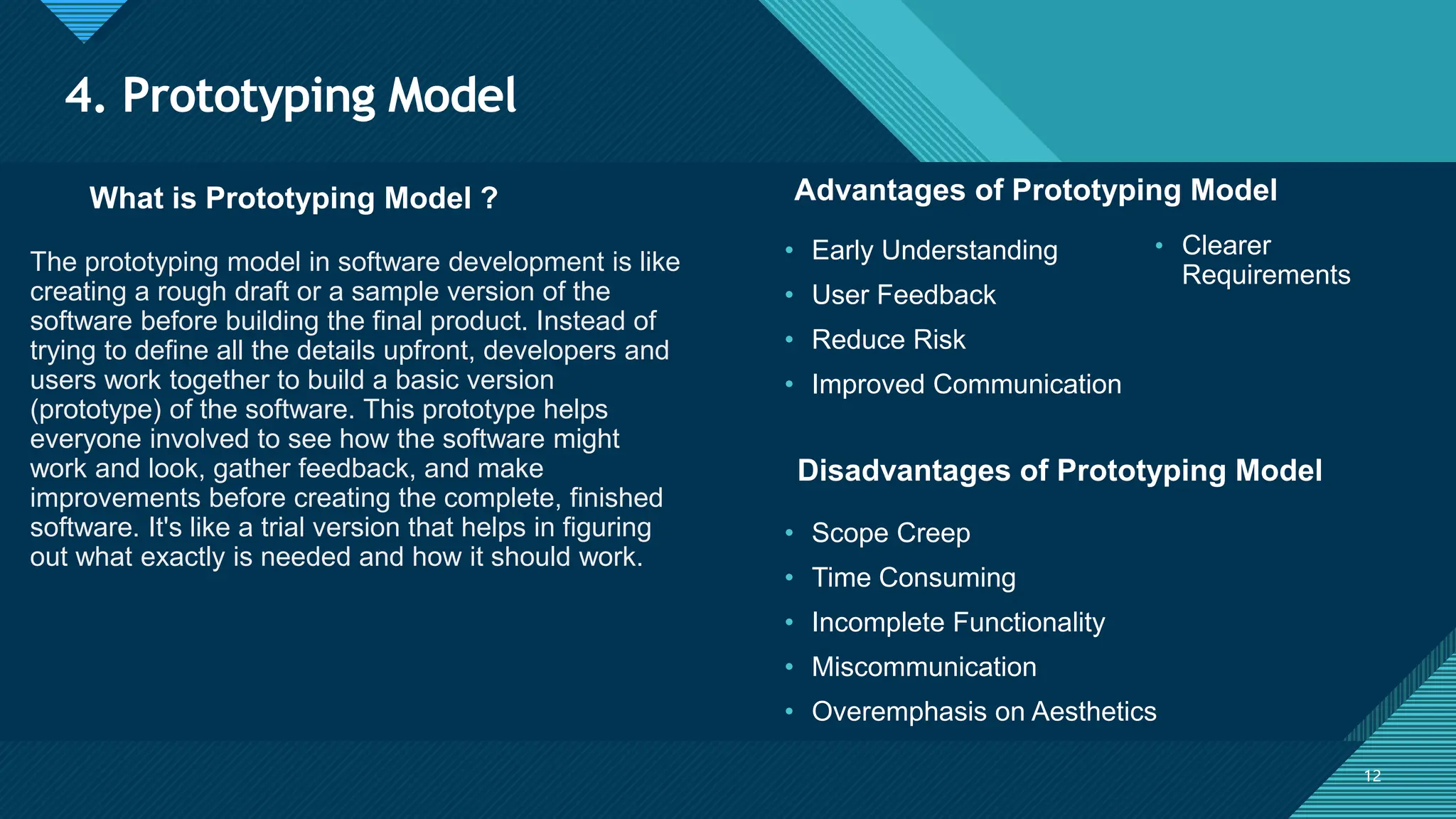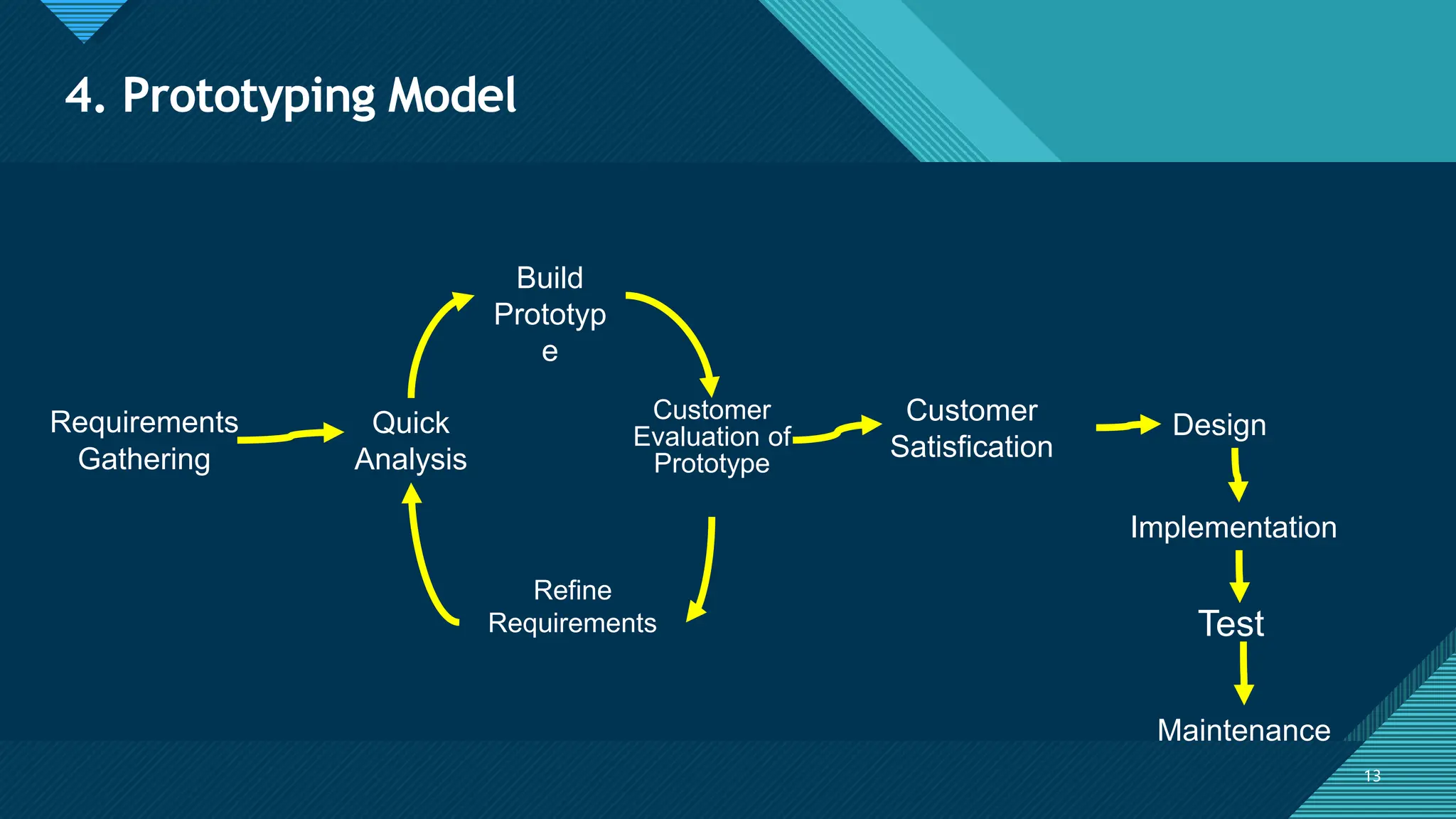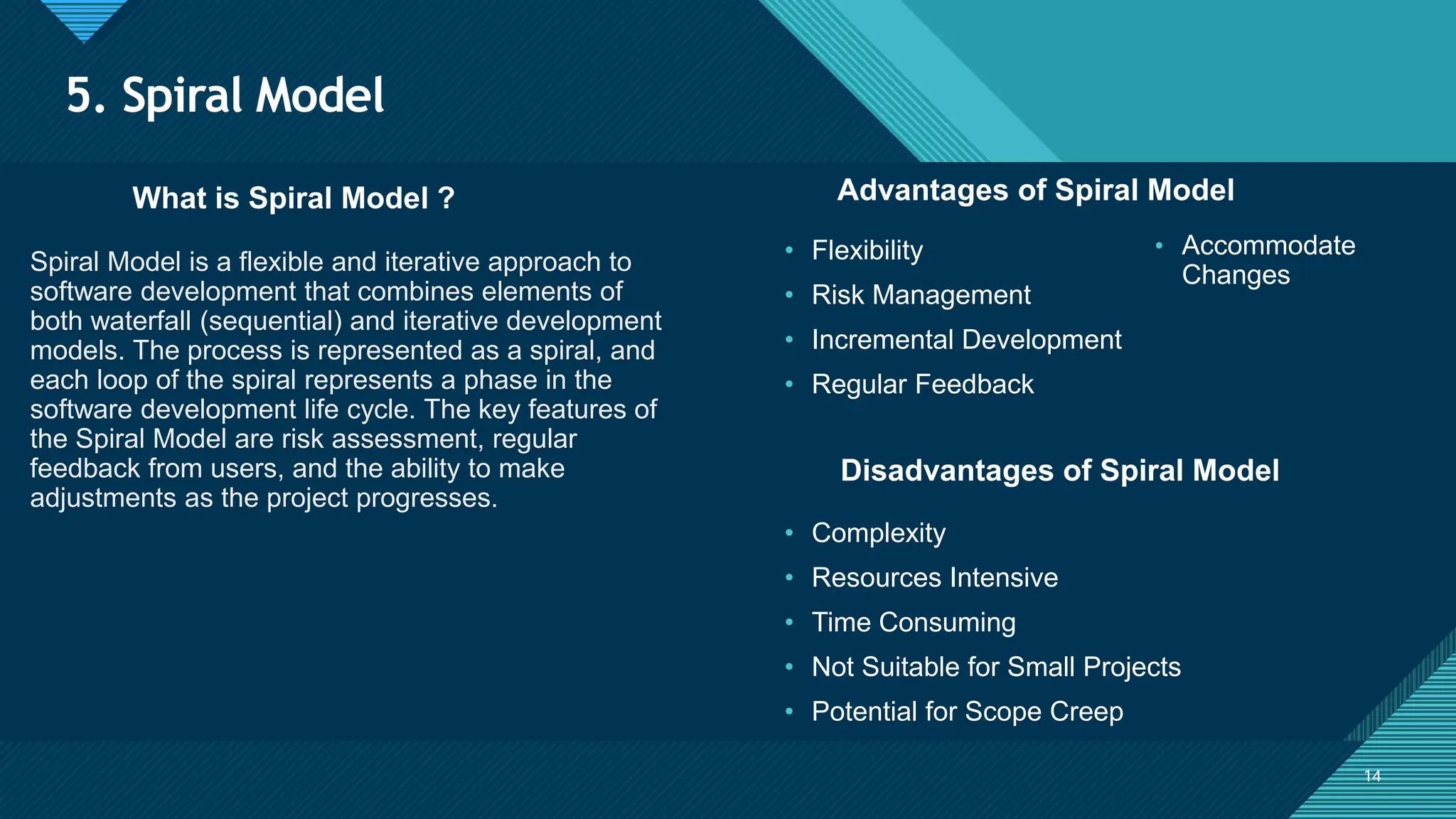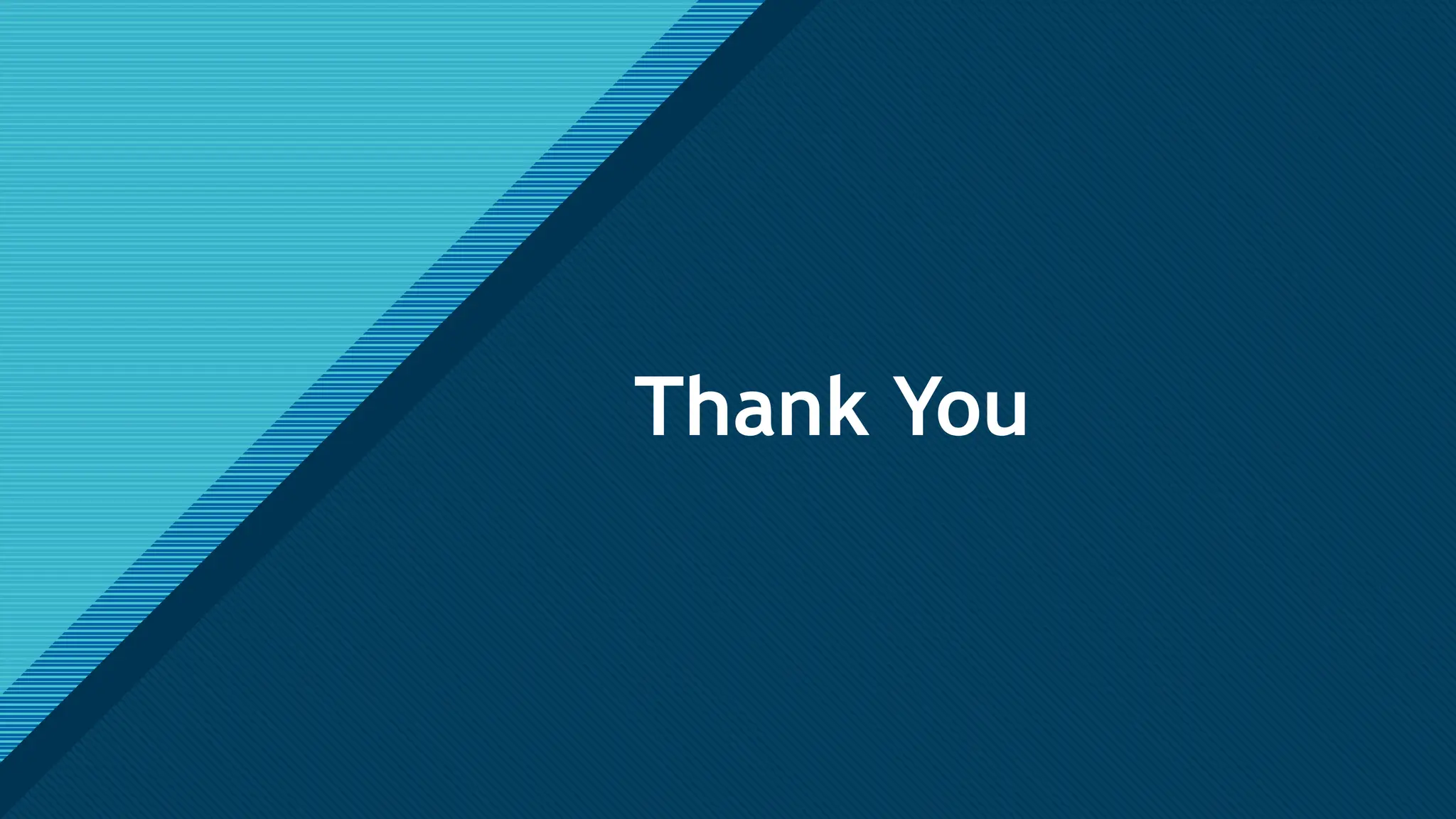The document discusses various software process models essential for guiding the software development lifecycle, including the classical waterfall model, iterative waterfall model, evolutionary model, prototyping model, and spiral model. Each model has distinct advantages and disadvantages, influencing their suitability depending on project requirements, flexibility, and user involvement. It highlights the importance of structured frameworks for successful project management and effective communication throughout development.

